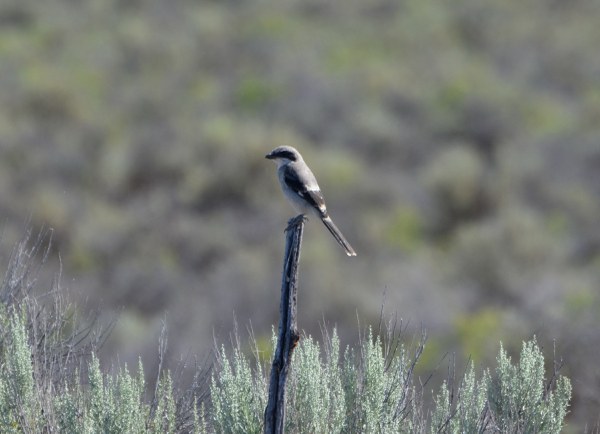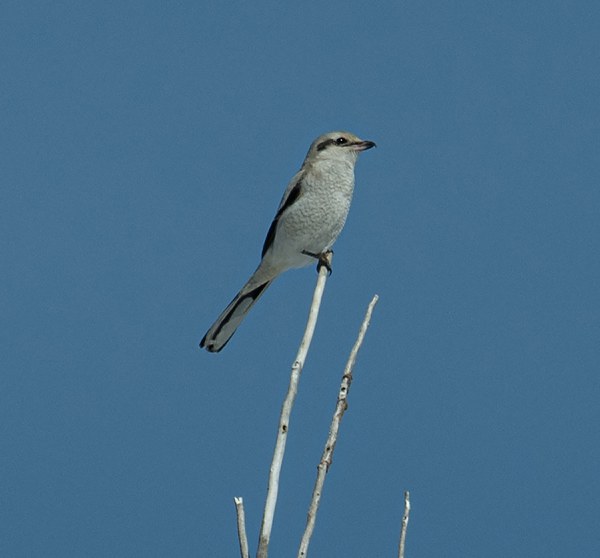Butcher birds.
Their name, from an old Germanic word for “shriek,” is a nod to their piercing cry and is enough to send shivers down the spine! Especially if you’re a small rodent, reptile, or large insect. Shrikes are counted among the few predatory songbirds, and we have two species in Central Oregon.
Listen to the calls of the northern shrike and loggerhead shrike.
The northern shrike is more common and likely the species you will see if you spot a shrike in Central Oregon. Northern shrikes, as their name indicates, can be found across the northern hemisphere in grasslands and shrublands from the Northern U.S., across Canada, and into Siberia and Mongolia!
The loggerhead shrike is the only shrike species endemic to (meaning found only in) the U.S. and is more commonly seen in the southern part of the country, though it comes into Oregon during its breeding season.

Like raptors, shrikes can often be seen on fence posts or other places that give them a good view of their hunting range. Unlike raptors, these birds have delicate feet, unsuitable for hunting and catching their prey. Instead, they have large beaks that are hooked at the end, and they make use of tools, like barbed wire fencing, thorns, or small branches to hang and dismember their meals. In the past, it was believed that thorns were made poisonous by this grisly usage!
Shrikes are known to prey on other songbirds, as well as small mammals, reptiles, and insects. Shrikes will mimic the songs of their quarry to lure the other unsuspecting birds into ambush range. No wonder they all wear a black mask across their eyes!
Northern shrikes are about the size of a robin, and loggerhead shrikes are a little smaller, but both have similar coloring with pale bellies, gray backs, and black wings, as well as those distinctive masks. You can tell a Northern shrike by the faint gray barring across its belly, while the loggerhead shrike has a wider and more distinct black bar across the eyes.

Although we might find some of their behavior to be creepy, these animals are an important part of the diversity and health of our lands and waters. The shrike is just one of our many wild and wonderful neighbors! Each animal has its own unique set of skills and behaviors that help it survive and do its part to maintain and contribute to our outdoor spaces.
Sources:
- The Cornell Lab, All About Birds: Northern Shrike, Loggerhead Shrike
- Audubon Bird Guide: Northern Shrike, Loggerhead Shrike
- Oregon Department of Fish and Wildlife: Vireos and Shrikes
- Wikipedia: Northern Shrike, Loggerhead Shrike
Learn more:


